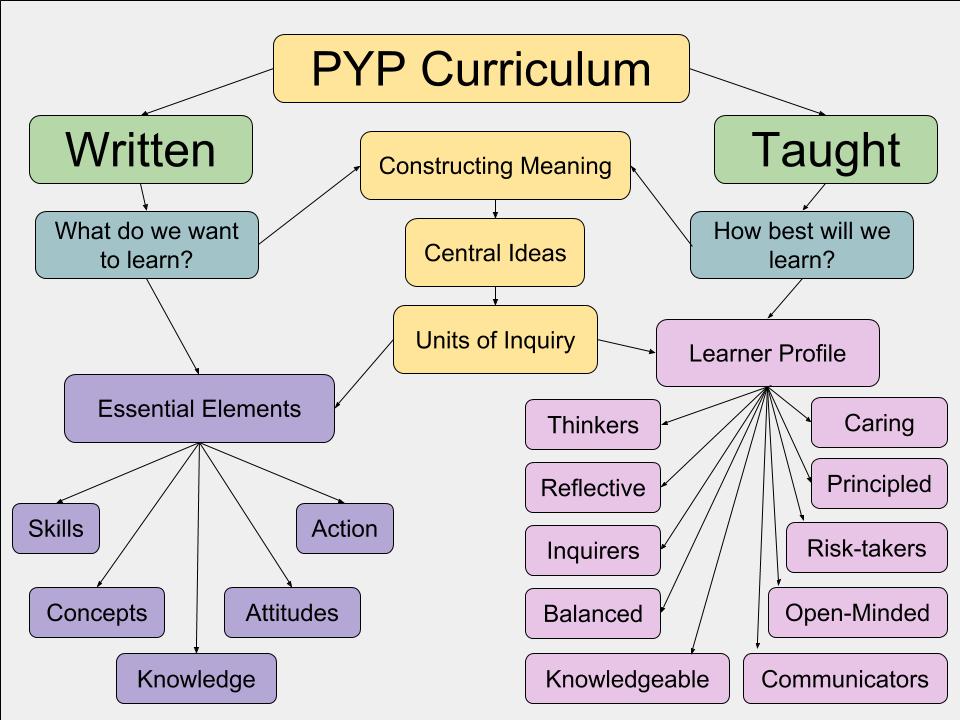|
Considering the three parts of the curriculum:
My understanding deepens as I see these questions and connect them with the PYP format of curriculum as I have seen these quite a bit around the school including in our unit plan templates. I don’t think I have enough information about these parts to create a visual representation connecting two of them. I struggled some to understand the 8 key concepts: form, function, causation, change, connection, perspective, responsibility, and reflection. It helped when I connected it with something that I am familiar with and work with in my classes so I took the basic theme of paint to try and interoperate the 8 key concepts. When I was reading through the key questions and definitions of the concepts I placed paint within the context of them and it greatly helped me to understand and relate to them. For example: What is paint like? (how can we describe it’s qualities?), How does paint work? (what do we need to use it?). The list of skills we teach was quite overwhelming. Although I know that we teach multiple skills at the same time and so many of them in just one day seeing them all together seems less possible than what we actually manage to achieve. For now I have an idea of the values and reasons behind the PYP curriculum but I will need more information and examples of the written as well as the taught curriculum to fully understand how it works in action. Here are my notes from reading the written curriculum section of Making the PYP Happen: The Written Curriculum
0 Comments
How do my beliefs and practices about teaching and learning align with the PYP? For a long time I have been looking forward to joining a PYP school because from my basic understanding of PYP I connected my student-centered, choice based approach of learning and experiencing art with the PYP inquiry driven pedagogy. Through this learning theories investigation I was able to connect with a theory that aligned with my beliefs and experiences related to learning while investigating the core values of PYP. Connect: I quickly connected to the paradigm of Cognitivism which is predomitally concerned with cognition or the act or process of knowing. This is closely related to the Teaching for Artistic Behaviors pedagogy I follow. In my classroom the most significant learning is acquisition based learning that it is going on all the time. We are continuiously trying to better ourselves as artists. Instead of teaching towards a product or a specific skill, students gain knowledge implicitly by following their natural curiosity. Although there is generally a specific task that they create for their end goal, the learning that happens in the process is often unconscious. In addition, it is stated that instruction should be clearly structured and well-organized. In this example I use the classroom as the learning tool. It is vital to TAB and myself to keep a room that is well organized so that the students can access the tools they need quickly and easily. Extend: The idea of learning theories, although not foreign to me, was not very familiar to me either. It is amazing how much time we spend as educators focusing on the outcomes of the learning and the structure of the activities to promote learning, with little devotion to the act of learning itself. The idea of cognitivism made me realize how TAB or Choice Based art education are more ways of directing learning. I constantly say that I am not teaching students how to make art rather I am teaching them how to be artists which immediately came to mind when I read the Manifestations in Adult Learning cognitivism sections which states “Learning how to learn.” Challenge: Perusing through the range of learning theories was fascinating and overwhelming. The phycology and philosophy of learning theories can be heavy at times and I’ll be interested to continue investigating these in the future. My questions now revolve around how exactly these learning theories connect with PYP.
Conclusion: I now realize what I most deeply connected with was the pedagogical approach of inquiry. Inquiry is at the heart of my teaching philosophy because I believe that when a student creates knowledge through learning independently or with others, rather than by being taught directly, the learning is sustained long term. I enjoyed connecting with the values of PYP, specifically I feel engaged in these learning principles from MPYPH:
“Inquiry involves an active engagement with the environment in an effort to make sense of the world, and consequent reflection on the connections between the experiences encountered and the information gathered.” |
The Blog!. The writings and happenings of What's Going On In The Art Room, written by Ms. Alisa Blundon in Istanbul, Turkey
Recent PostsGuiding Students to Independence through the Artistic Thinking Process
Class Art Kits | Student Responsibility of Supples Inspiration Around the Room Draw Around the Room Archives
March 2020
Categories
All
|

 RSS Feed
RSS Feed
